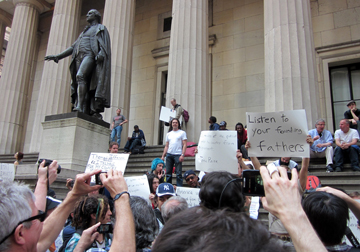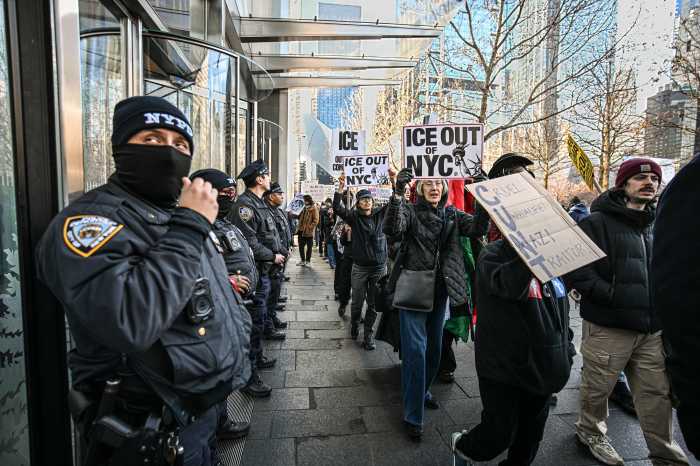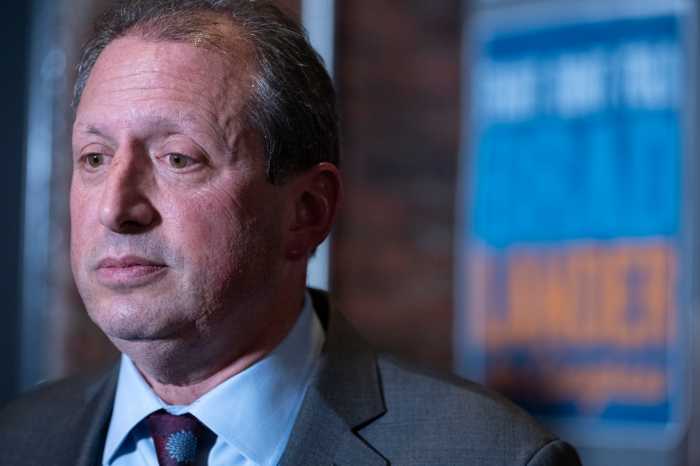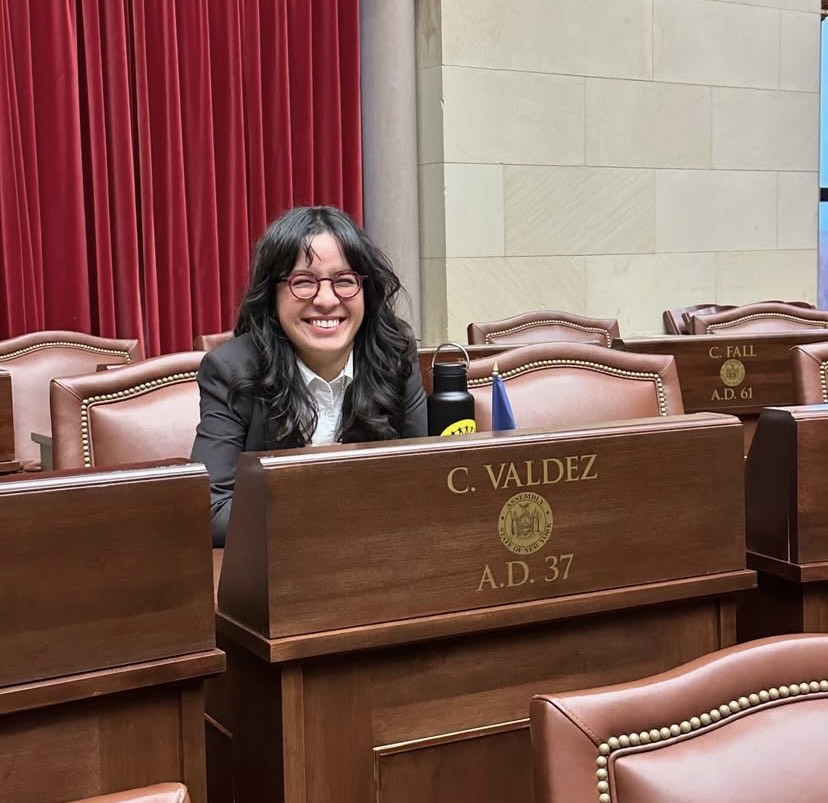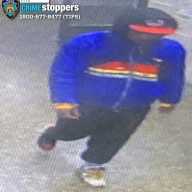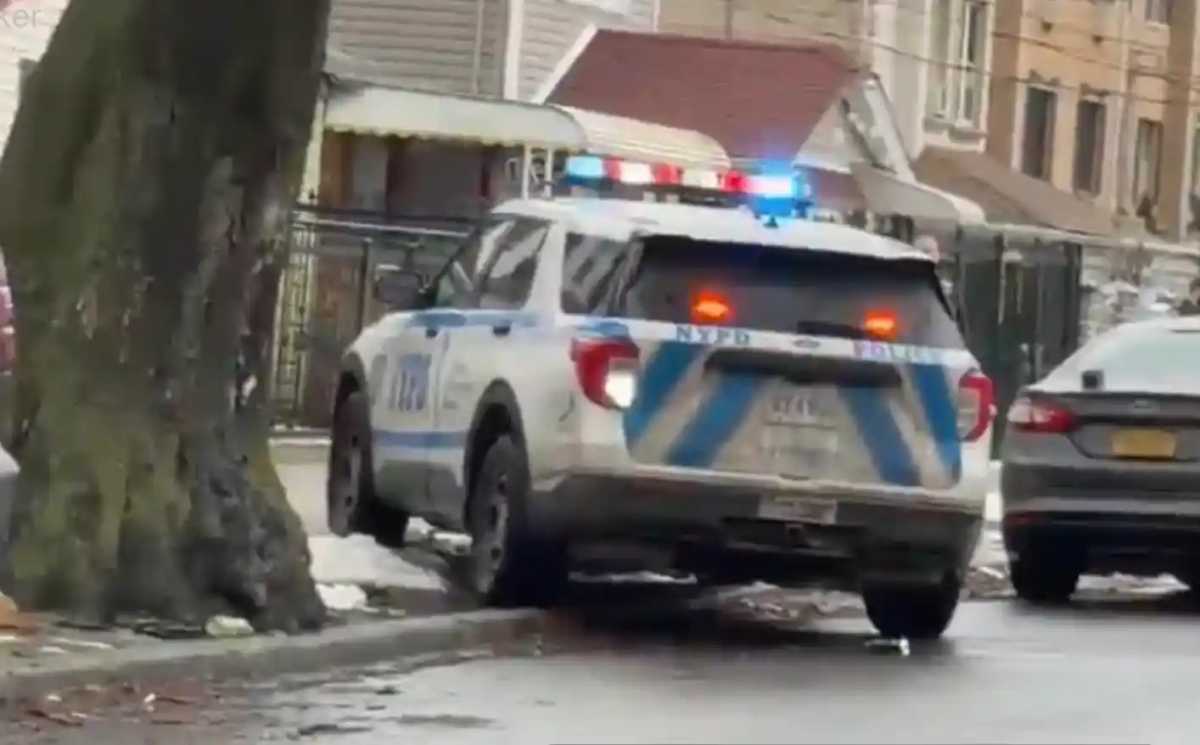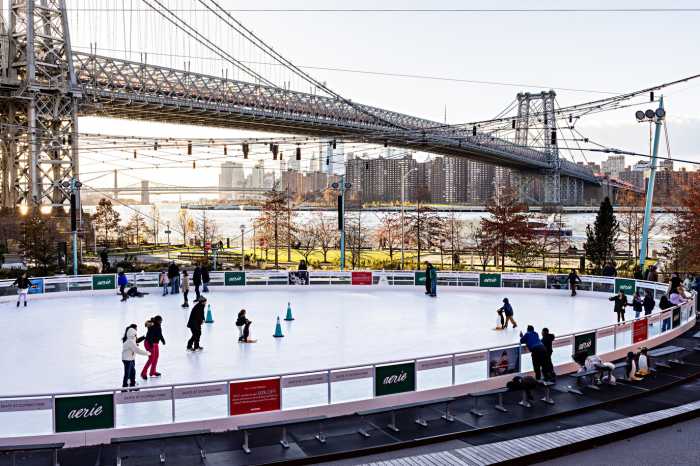[media-credit id=1 align=”aligncenter” width=”300″]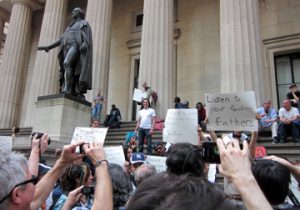 [/media-credit]BY ZACH WILLIAMS | For Occupy Wall Street activists the past week has been about reasserting themselves, both in name and in the spirit of the movement.
[/media-credit]BY ZACH WILLIAMS | For Occupy Wall Street activists the past week has been about reasserting themselves, both in name and in the spirit of the movement.
With two weeks left until the promised mass mobilization on May 1, aimed at ushering in the ‘American Spring,’ activists last week, reasserted their claims to public spaces by sleeping on the sidewalks of Wall Street directly across from the New York Stock Exchange. But a 2000 court ruling allowing people to sleep on city sidewalks as a form of political expression did not deter NYPD officers from ending the protest Monday morning. Five arrests were made, according to activists. But that was not the end of the ‘occupiers’ presence in the neighborhood.
Tess Cohen, a Brooklyn resident, said Thursday night that police actions which forced protesters to vacate Union Square in the middle of the night spurred activists to sleep on nearby streets, an “organic and spontaneous” strategy which soon led them to Wall Street.
“The cops totally forced our hands in this,” said Cohen. “They don’t let anybody sleep anywhere. Obviously at the very beginning of all this, if there was one thing that they were protecting and trying to keep a distance from us, [it] was right here. It’s just amazing that the name Occupy Wall Street has… finally grown into its name for the first time.”
After NYPD officers said they could not sleep on Wall Street another night, ‘occupiers’ congregated on the steps of Federal Hall Monday afternoon. While they occupied one side of the steps throughout the day, a law enforcement officer from the National Park Service warned them at 5 p.m. that they could not sleep on the steps and would face arrest should they refuse to leave.
Activists chose to remain at the site and their numbers grew to roughly a hundred. About the same number of NYPD officers were soon on the scene, standing in formation across the street as National Park Service police stood at the top of the stairs. The standoff lasted until the early hours of the morning when police told protesters they could sit on the steps but could not sleep there. By then about a dozen activists had been arrested on charges including disorderly conduct and obstructing the sidewalk.
As the prospect of mass arrests loomed, activists held an impromptu meeting to discuss whether or not to vacate the space. The loud discussion, as well as noise stemming from activists singing protest songs, drew another group into the ongoing fray.
The situation grew tense around 10 p.m. as a small group of local residents stood across the street. Some jeered the protesters while others claimed that the noise was preventing them and their children from sleeping. Several protesters engaged in an exchange of obscenity-laden arguments with some of the residents.
After one resident crossed the street to confront the activists, a shouting match ensued and police intervened. A scuffle later broke out between another resident and activist, which led to the latter’s arrest. He and other activists maintained that the resident attacked him.
Some of the residents said the protesters were demanding undue help from others and the government when they should focus instead on “holding down jobs and bettering their personal situation.”
“My kids can’t sleep. I’ve been homeless. I’ve been unemployed,” said one resident that requested anonymity. “Tuck in the skirt, suck it up and stop whining and bitching. And that’s it.”
Another resident, who gave only his first name, James, said while he respected the rights of the activists to speak freely, they should go somewhere else that would not disturb him and his neighbors.
“If they want to protest, go to Times Square where no one cares about night noise. I don’t care. Here we are trying to sleep and that is all we care about,” said James, who added he had to go to work early in the morning.
The presence of activists at the national park drew mixed reactions from passersby. Some expressed their support, stating that their attitude towards Occupy Wall Street changed once they saw the protests in person and better understood the intent of the movment.
“On T.V. it seems so far away… so to be here brings it a little bit more closer to home and you are like, ‘OK this is what is really going on,’” said Margerie Duvalseint, an administrator at Pfizer who is considering participating in the movement. “People are really not happy with what is going on and they are doing something about it. I think that is pretty cool.”
But others said the movement for social and economic justice lacks the cohesion and discipline necessary to effectuate lasting change in American politics and society. Some expressed fears that the movement seeks a socialist revolution in the United Stated while others said it should focus on a set of specific issues rather than the range of social, political and economic issues discussed by the wide range of activists now falling under the O.W.S. umbrella.
During the winter months some within the movement attempted to instill greater discipline and fine-tune the movement’s agenda. Meetings of the General Assembly and Spokes Council often broke down, with some members using the forums to voice their grievances toward the movement without regard to the established meeting process. While a code of conduct aimed at bringing greater order to meetings gained some traction, the meetings eventually stopped being held as funding ran out and activists expressed dismay that a large part of their time was spent in meetings rather than staging actions in the local community.
While it remains to be seen if the movement will be able to mobilize for the upcoming “general strike,” hopes are high among activists that the day will give the movement a fresh burst of momentum. They are calling for supporters to refrain from working, school, banking and shopping on May Day, a traditional holiday for labor activists.
Eve Silber, who said she’s been ‘occupying’ the city for 25 years, said gauging the overall success of the movement must be done so from a “bottom-up perspective.”
“This movement is supposed to change people. It’s going to have to change people more than people change it,” said Silber. “So the outcome is when individual lives are changed by participating in this movement … the change will come when truth becomes fashionable, as it’s slowly becoming again.”



